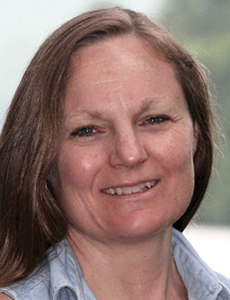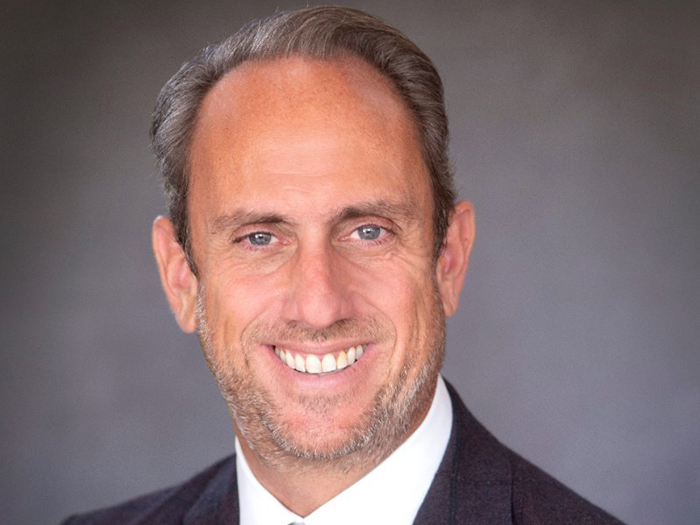Vermont 2015
The Surprising World of Nonprofit Captives

Pamela Davis recalled a conversation she had the other day with someone not familiar with nonprofits. When the individual heard what Davis does, that person asked:
“Do they even need insurance? Do they even have employees?”
“I didn’t even know where to start,” said Davis, the founder, president and CEO of Nonprofits Insurance Alliance Group, a captive reinsurer for nonprofits.
Nonprofits’ operations often expose them to complicated risks, which is why many nonprofits belong to and operate their own insurance companies — captive insurance companies.
More than a quarter of all active captives in Vermont are owned and operated for nonprofits. This is old news to some. Church Mutual Insurance Co., now a fully admitted insurer, traces its roots to a captive conceived of by 10 Lutherans in 1897. Catholics had them beat by a few years when they founded the Catholic Mutual Relief Society of America in 1889, now Catholic Mutual Group.
The Episcopal Church’s current captive dates back to 1913, and the Seventh Day Adventists’ back to 1936. A 20-something-year-old captive like the National Catholic Risk Retention Group Inc. is a neophyte amid this crowd.
Land trusts have flocked to captive insurance as well. Launched in June 2012, the Terrafirma Risk Retention Group LLC now serves 474 land trusts and insures 7.2 million protected acres.
The land trust leaders who organized the captive needed a risk management tool to provide nationwide coverage, to be flexible enough to handle the multiplicity of claims that arise, and to always be there to defend the trust in court. Commercial and traditional insurance didn’t fit the bill.
“The only thing left was captive insurance,” said Leslie Ratley-Beach, conservation defense director of Land Trust Alliance, where she led the establishment of Terrafirma RRG.
A Custom Fit
For Michael J. Bemi, president, CEO and director of National Catholic RRG (who kindly provided that long history of religious captives above), nonprofit organizations seek the same benefits from alternative risk transfer as do for-profits — namely, adequate insurance capacity, quality of coverage in terms of appropriate terms and conditions, and consistency and affordability of premium levels — all over the long haul. On top of that primary list, add the opportunity to gain control over underwriting profits and investment earning, or at least a larger share of them.
The driver for National Catholic when it first formed in 1987, however, was not to derive profits.
“When we formed, the market was a total disaster,” Bemi said.
Davis, whose Nonprofits Insurance Alliance Group consists of three self-insurance entities, recalled the insurance market a quarter-century ago as “complete chaos.”
After surviving numerous hard and soft cycles in the traditional insurance market, captive owners such as Bemi and Davis came to appreciate another captive benefit: loss control and claims management.
For nonprofit captives in health care, the benefits of loss control and claims management have become an operational imperative. Good insurance and risk management equates to top-notch health care delivery, explained C. Richard Cornelius, who oversees two health care-related RRGs in Vermont: Indiana RRG and Heartland RRG.
“When we formed, the market was a total disaster.”– Michael Bemi, president, CEO and director, National Catholic RRG
In Cornelius’ experience, that means empowering individual risk managers — giving them a platform and the tools to effect change in their organizations. “I have always been a believer in a very strong, robust risk management program,” Cornelius said.
The health care industry in general became a believer after its professional liability insurance crises in the late ’70s and early 2000s. Nearly every major U.S. hospital system operates some form of self-insurance program and/or captive, said
Cornelius, and alternative risk transfer has increasingly become the insurance prescription for smaller, community-sized entities. As much as half of all medical-malpractice exposure in the U.S. is underwritten by captives, he said.
The attraction of quality claims management is especially important because of the rising tide of litigiousness in the United States, which has hit nonprofits as hard as every other type of organization.
“There is no reticence anymore to sue the church,” Bemi said.
For Cornelius and his health care insureds, the cost of litigation and claims management are an ongoing battle between two extremes — between a hospital appearing like a pushover ready to whip out its checkbook, and one appearing unfair to patients who’ve suffered an indefensible incident. Most cases are in the tricky, gray area in between.
Another looming threat is the ever-present charm offensive put on by the commercial marketplace.
If a big commercial carrier wants a certain type of business, they can cut prices and throw in coverages that captives may be unable to unwilling to entertain, said Bemi. Most captives don’t have the cash or the marketing resources to compete in a long, heated battle with traditional market players.
While Bemi hasn’t seen any commercial market incursions into his space yet, Cornelius sounded less sure. In health care, the cost of premiums has been suppressed for the last half-dozen years.
“Most people believe you have cycles, and you have had two [hard markets]. It’s got to happen again, right?” he said.
It hasn’t. That puts pressure on captives and RRGs to flatten costs and continue to offer valuable coverages, terms and risk management services.
Busting the Myths
One misguided notion about captives is that nonprofit insurance buyers are seeking tax avoidance. Since they don’t pay taxes, they clearly are after other benefits captives have to offer.
They’re also by and large keeping it onshore, in U.S.-based domiciles such as Vermont.
“There really is no reason to go outside the United States … pure and simple,” Cornelius said.
That isn’t just a budget issue, it can be a political one too. Flying executives to the Caymans or Bermuda could easily seem like a boondoggle to donors or an easy target for newspaper reporters.
Nonprofit captives also have their parent companies’ mission-driven nature to account for. “These are American land trusts conserving land in America,” Ratley-Beach said.
Here’s another myth: Nonprofits can’t bank enough surplus or wield enough risk management staff to self-insure, let alone launch a captive. Try telling that to Davis’ Nonprofits Insurance Alliance Group and its 13,000 member nonprofits.
These 501(c)(3) public-benefit organizations tend to be tiny yet complex for their size.
They pay little and ask their small staffs to handle stressful situations. They work with fragile populations. They tend to operate in vacuums left by “market failures” — e.g., homeless shelters — in neighborhoods that are far from pleasant. It’s no wonder that the commercial insurance market dried up for them 25 years ago.
Underwriters either had rules that prohibited writing nonprofits, Davis said, or they offered cookie-cutter coverages.
“Part of what we have been able to do is [create] coverage forms and loss control specific to this sector,” Davis said. Years ago, this included affirmative sexual abuse policies; today they include theft and injury coverage for volunteers.
Claims management services are a boon to smaller nonprofits. For those without in-house HR expertise, the captive offers “employment risk managers” (employment law attorneys) who can help manage incidents and defense claims.
On the loss control side, they can answer tough employment law and even D&O questions.
Do those benefits sound familiar? Yes, these are the same captive benefits that the largest nonprofits have sought for over a century — and the largest for-profit corporations, too, for nearly as long.
Complete Vermont 2015 Coverage:
 Building an Engine for Global Risk Management Success. A fully integrated captive brings risk management to the multiple arms of an organization.
Building an Engine for Global Risk Management Success. A fully integrated captive brings risk management to the multiple arms of an organization.
 The Surprising World of Nonprofit Captives. They comprise fully one-quarter of all captives domiciled in Vermont.
The Surprising World of Nonprofit Captives. They comprise fully one-quarter of all captives domiciled in Vermont.
 True Partners. The success of the captive industry in Vermont is the result of a rare, collaborative relationship between the public and private sectors.
True Partners. The success of the captive industry in Vermont is the result of a rare, collaborative relationship between the public and private sectors.











